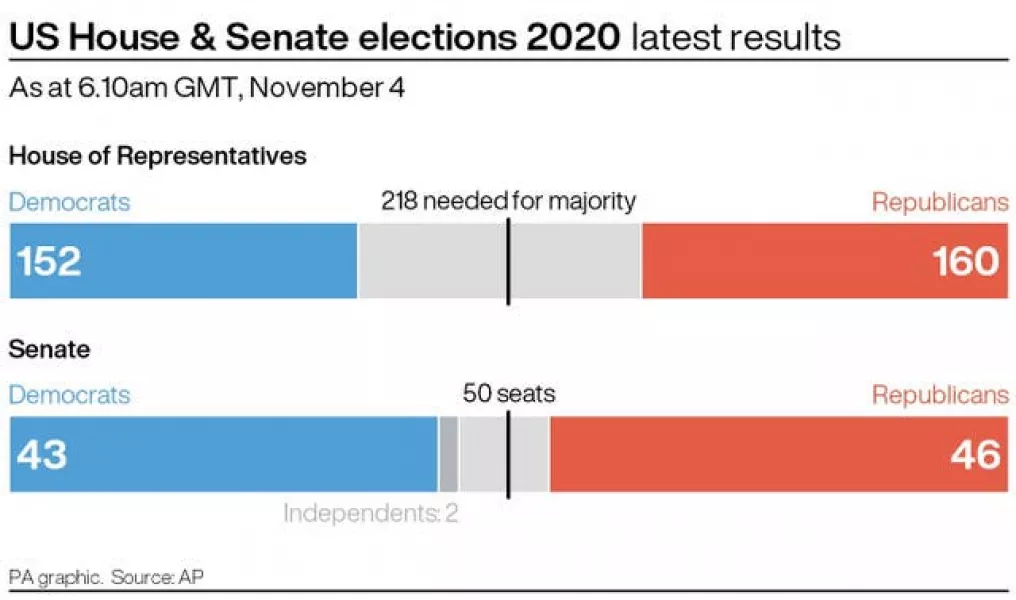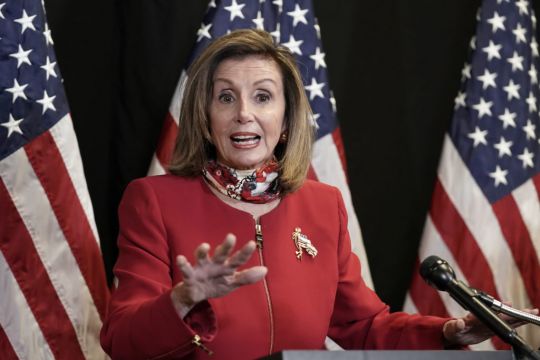Democratic expectations of expanding their majority in the House of Representatives appear to be waning as they failed to defeat any Republican incumbents in initial returns.
Democrats, as expected, picked up a pair of North Carolina seats vacated by Republican incumbents after a court-ordered remapping made the districts more Democratic.
But even as they seemed likely to retain House control, the voting’s results were developing into an unexpectedly disappointing election for the party.

The parties’ swapped a handful of seats apiece, underscoring what seemed to be largely a status-quo House election.
After decades of trying, Republicans finally defeated 15-term representative Collin Peterson from a rural Minnesota district that backed US President Donald Trump in 2016 by 31 percentage points, Mr Trump’s biggest margin in any Democratic-held district.
Mr Peterson, who chairs the House Agriculture Committee, opposed Mr Trump’s impeachment and is one of the House’s most conservative Democrats. He was defeated by Republican Michelle Fischbach, the former lieutenant governor.
Democrats Debbie Mucarsel-Powell and Donna Shalala also lost, falling in adjacent south Florida districts in a state where Mr Trump seemed to consolidate his support among Cuban voters.
Should Democrats retain the House majority as seemed likely, it would mark only the second time in a quarter of a century that they have controlled the chamber for two consecutive two-year Congresses. The first period ran from 2007 until 2010, Nancy Pelosi’s initial run as House speaker.
Democrats’ hopes of protecting their majority and even expanding it were based on public anxiety over the pandemic, Mr Trump’s alienation of suburban voters and a vast fundraising edge. But those advantages did not carry them as far as Democrats hoped.
Before votes were counted, both parties’ operatives agreed that the Republican Party was mostly playing defence and would be fortunate to limit Democratic gains to modest single digits. Democrats control the House by 232-197, with five open seats and one independent. It takes 218 seats to control the chamber.
Earlier on Tuesday, Ms Pelosi told reporters she was “absolutely certain” that Democrats would “solidly hold the House”. Illinois Democratic representative Cheri Bustos, who chairs the House Democratic campaign organisation, predicted wins in deeply red districts.
With Republican expectations for capturing the House all but non-existent entering polling day, Mr Trump’s party is likely to view the day’s results as acceptable.
Democrats lost a series of what were viewed as coin-flip races, failing to defeat Republican incumbents in Cincinnati, rural Illinois, central Virginia and the suburbs of St Louis.
In an example of Democrats’ disappointing showing, they failed to win an open district outside Houston where minorities have become a majority of residents. The winner, Republican Fort Bend County Sheriff Troy Nehls, had said a local mandatory mask order “looks more like a communist dictatorship than a free republic”. That race cost the two sides more than 32 million US dollars, making it one of the country’s most expensive, according to the non-partisan Centre for Responsive Politics.







